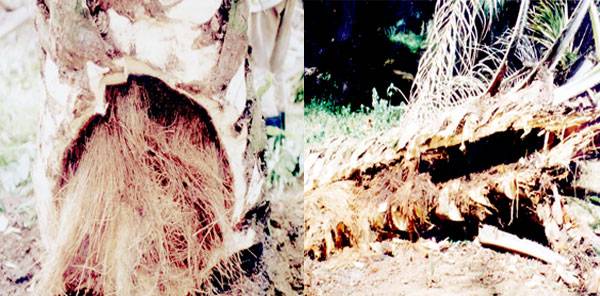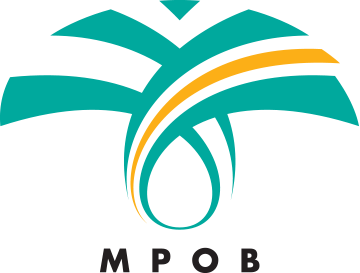Biology and Symptom
The first symptom of stem wet rot is usually the sudden and simultaneous death of all unexpanded spear leaves, together with the youngest expanded fronds surrounding the spears. This is followed by the appearance of a dull yellowish discoloration in the remaining fronds, which then rapidly wither and die, until the whole crown has been killed. When the trunk of an affected palm is split, it is usually found that the internal tissues have been almost completely destroyed. The disease is typified by a wet, putrid rot which is brown, yellow or greyish in colour, and has a very objectionable smell.

Causal
Although there is no proven pathogen, the type of rot found in the stem suggests that a bacterium is involved. A number of commonly-rotting fungi have been isolated from diseased tissues but these are very unlikely to be primary pathogens, although possibly accelerating tissue destruction.
Disease Management and Control
There is no known control of stem wet rot. The possible association of high water-table with disease incidence indicates that drainage should be improved. Palms killed by the disease should be excavated and disposed of in the interrow to prevent their colonization by potentially pathogenic fungi.
